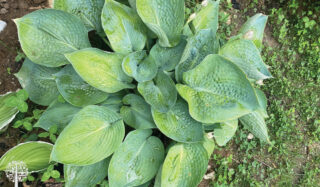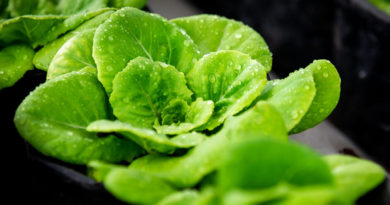Edimental Gardening: Why Hostas Deserve Some Growing Space
Have you heard about edimentals? They are the latest gardening trend! Edimental plants are ornamental and edible. They are primarily perennial (coming back year after year) and, along with their aesthetic appeal and bright blossoms, provide fresh produce. Think sunflowers, Shasta Daisy, berry bushes and hostas.
In this new series, Garden Culture will introduce you to edimentals and how to grow and use them in the kitchen. We’re getting the ball rolling with learning about hostas.
How To Grow And Care For Hostas
These clump-forming plants grow from rhizomatous roots or bare root divisions. In late spring or summer, a white or mauve flower emerges on a long stalk above the leaves. Although the blossoms are pretty, the tropical-looking leaves of a hosta plant give it a certain joie de vivre.
Hostas are easy to grow and shrug off heavy rain, drought, and most pests. They thrive in shade or part-shade. Although they may grow smaller in a pot, they will still do well and return faithfully year after year. My hostas are happy in my container garden!
Hostas die back to the ground in the fall, with a majority hardy to at least zone 4. They need a minimum of six weeks of temperatures below 42°F to enter dormancy and reset their growth cycle.
There are hundreds of hosta cultivars. Smaller varieties reach their mature size in three to five years; larger varieties can take five to seven years and can have huge draping leaves, sometimes over a foot long.
Harvesting Hostas
Hostas have been used in Chinese medicine to treat ailments such as high blood pressure and skin inflammation. In Japan, hostas are a traditional food commonly added to stir-fries, salads and soups.
Hostas grown for their ornamental value are often treated at garden centers with pesticides or other chemicals harmful to humans. Hostas sold and grown specifically for food are fine but harder to find. Growing your own from a bare root bulb available from local garden centres in spring is the best way to ensure safety. Plant the hosta in the vegetable garden with other edibles. Note: hostas are toxic to pets.


Culinary Delights
The most commonly eaten parts of the plant are the new shoots that pop out of the ground in mid-spring. Use a sharp knife to cut them off at ground level. Don’t harvest them all; doing so will hamper the plant’s production. Cut a few, leaving the majority to grow and return next season.
The inside will look and taste like a leek. You can eat them raw, but they are delicious seared with butter or olive oil, garlic, and soy sauce. Hosta leaves have a slightly earthy taste and can be used in salads, stir-fries, soups, wraps and stews as a substitute for other greens such as Bok choy or spinach. Blanch the leaves in boiling water for a few minutes before drying them with a tea towel and adding them to the dish.


Disclaimer
Not all plants are edimentals, and not all parts of an edimental plant are edible. Before dicing, chopping and chowing down, do some research. Ask your local garden center or seek advice from a foraging expert. If in doubt, don’t eat it!
Resource links




